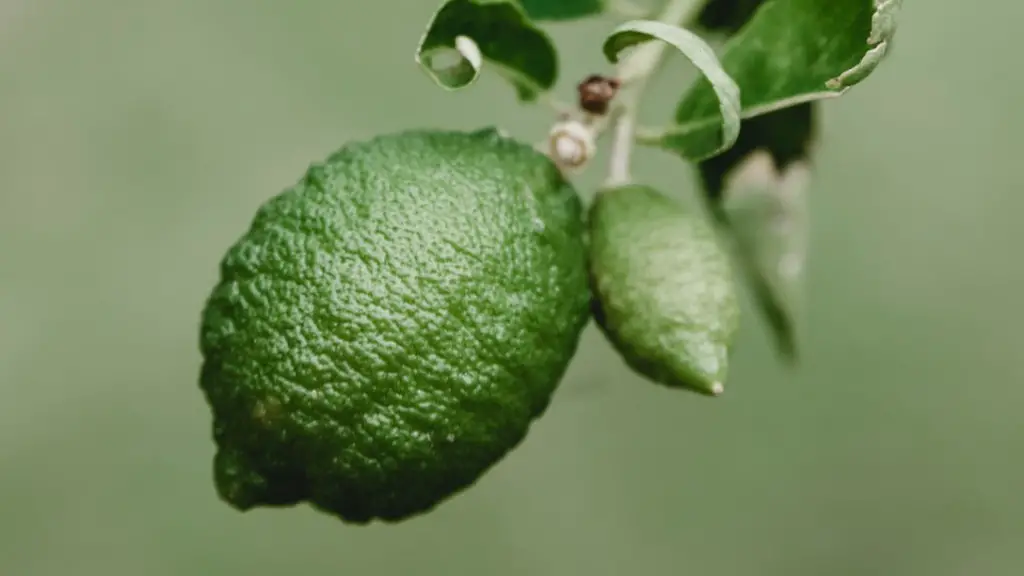Lemons are one of the most popular citrus variants, making them ideal for growing in a wide variety of home orchards. The question of how high a lemon tree can grow is a common one and the answer depends on a few factors. Lemon trees are not particularly tall, usually reaching between 9 and 12 feet when grown in optimal conditions. While it is possible to see them reaching heights of 20 feet, this is highly uncommon. Pruning and positioning are key factors that can directly effect how tall a lemon tree grows.
Lemons are usually grown in containers or in-ground, with either option producing excellent results. The most determinative factor in how tall the lemon tree grows is the width of the container along with the available space. Given enough space, lemon trees can grow up to 10-15 feet in height, with most reaching heights of up to 8-12 feet. Furthermore, the number of branches often determines how wide the tree is, which in turn affects how tall it grows in the long run.
Aside from the height, another factor that affects lemon tree growth is the pruning process. Pruning should be done regularly, as cutting off dead branches, overgrown leaves and any fruit that is not ripe enough can help the tree to grow faster and healthier. If left untouched, lemon trees can easily reach 9-12 feet in a matter of 2-3 seasons, although they can reach heights of up to 20 feet under ideal conditions.
In terms of soil nutrition, lemon trees will do best with a pH that is between 5.5 and 6.5. Additionally, a good organic fertilizer will help the tree to flourish and aid in the growth dynamics of the lemon tree, as well as with the fruit production. If the tree is placed in a different environment, additional fertilizers may be necessary in order to keep the tree healthy.
Temperature is another key factor to consider when growing a lemon tree. On average, lemon trees prefer mild climates with temperatures ranging between 30-85 degrees Fahrenheit. They require adequate sun exposure, at least 6 hours per day. If the temperature falls too low, the tree can be affected by frost, blackening of leaves or overall loss of growth.
Humidity also plays an important role in the growth of a lemon tree. If a lemon tree is placed in an area that receives too much humidity, the tree is prone to developing powdery mildew or citrus blight, which can stunt its growth. In order to prevent this from happening, a humidifier can be used to keep the environment at more even levels of moisture in the air.
Weather Conditions
Weather conditions have a direct effect on how a lemon tree grows. Lemon trees that are exposed to heavy frost, cold and damp soil, as well as high winds will result in stunted growth and a weakened overall tree structure. In addition, if the lemon tree is placed in an area that experiences a lot of wind, it can cause branches and leaves to fall, thereby decreasing the lemon tree’s potential to reach its maximum height.
Lemon trees are highly susceptible to hail damage, which can stop the production of fruit and can even kill the tree. If a lemon tree is planted in an area that experiences hail regularly, it is best to protect the tree from the elements by wrapping it with a protective net or other shield.
Finally, excessive water will limit the growth of a lemon tree. The tree needs to be watered regularly, but not to an excessive amount. A few times a week should suffice, depending on the weather conditions and soil type.
Container Size
The size of the pot or container that the lemon tree is planted in has an impact on the growth of the tree. It is important to select the appropriate container to ensure that the lemon tree has enough room to grow. A standard-sized pot should be at least 60 cm deep and about 20 cm wide in order to provide the lemon tree with enough space to grow its fullest. A larger pot or container will allow the lemon tree to reach its maximum height.
Container size also affects the soil type needed for a lemon tree. If a container is too small, the soil can become dry and tight, making it difficult for the lemon tree to absorb the necessary nutrients to grow. Alternatively, if the container is too large, the soil can become waterlogged and the tree can suffer from root rot. This can lead to leggy, unhealthy growth and a reduced height potential.
It is also important to remember to prune the lemon tree regularly when growing in a container. Since the container size is limited, the shoots of the lemon tree need to be regularly pruned off in order to prevent them from overgrowing and stunting the tree’s growth.
Planting Location
The location of the lemon tree is important for its overall growth and health. When looking for a suitable spot, it is important to remember to keep the tree away from harsh winds, direct sunlight, and cold weather. Lemon trees do best when planted in areas with lots of shade, so it is important to consider this as well.
The lemon tree’s location will also affect the amount of water and fertilizer it receives. If the tree is placed in an area with a regular rainfall, then it is likely that the tree will not need to be watered regularly. Conversely, if the lemon tree receives inadequate water and fertilizer, it will be more susceptible to disease and may even die.
Additionally, it is important to ensure that the soil surrounding the tree is well drained and not overly dry. If a lemon tree is planted in an area with standing water, it can easily develop root rot. In order to improve drainage, it is important to mix compost or peat moss into the surrounding soil.
Getting Started
When planting a lemon tree, it is important to begin with a healthy seedling and follow the standard planting instructions. This includes planting the lemon tree in the appropriate sized container and in an optimal location, as well as providing the tree with all the necessary tools to survive and grow. Regularly pruning the tree will help to ensure that it develops optimal growth.
It is important to keep in mind that lemon trees require adequate water and fertilizer, as well as regular pruning. Not only will this help the tree to reach its potential height, but it will also help to increase the productivity of the tree when it comes to fruit production.
Lastly, it is important to remember that every lemon tree is different and may grow differently from the standard height of 9-12 feet. With proper care and good growing conditions, some lemon trees can reach heights of up to 20 feet. Practicing good horticultural practices such as providing the tree with enough space, nutrient rich soil, and proper pruning can go a long way towards ensuring a healthy and productive lemon tree.
Types of Lemon Trees
It is important to choose the right type of lemon tree for the climate in which it is being grown, as this will affect how tall the tree will grow. There are two common types of lemon trees, the Meyer and the Ponderosa, both of which tend to reach heights between 9-15 feet. If planted in locations with mild temperatures and proper growing conditions, some lemon trees can reach heights of up to 20 feet.
The Meyer lemon tree is known for being more cold resistant and resilient than other varieties and prefers temperatures no lower than 40 degrees Fahrenheit. Its fruits are often medium-sized, with a lightly sweet and tart flavor. On the other hand, the Ponderosa lemon tree is slightly less cold-hardy, preferring temperatures no lower than 32 degrees Fahrenheit. Fruits from the Ponderosa lemon tree will be significantly bigger than those of the Meyer and have a noticeably more acidic flavor.
When seeking to grow a lemon tree in colder climates, it is important to select the hardiest and most resilient species, as this will increase the likelihood of the tree reaching its full potential height. Additionally, it is important to take into account the space available for the lemon tree to grow its fullest and to remember that trees will require regular maintenance and pruning in order to reach full height.
Care and Maintenance
Regular care and maintenance are paramount when looking to grow a lemon tree to its fullest height potential. Watering and fertilizing the tree regularly to ensure that its is receiving enough nutrients to stay healthy and strong is essential. Additionally, pruning the lemon tree will help to maintain the tree’s size and shape, as well as its overall health.
Mulching around the base of the tree can also assist with the lemon tree’s growth. Mulch works to retain moisture and keep the soil from becoming waterlogged and can also help to keep weeds from sprouting around the base of the lemon tree.
In terms of pests and diseases, it is important to look for signs of infestations and act as soon as possible. Even the hardiest of lemon tree varieties can succumb to pests, fungi and viruses, all of which can reduce its potential to reach maximum heights. If any signs of infestation are noticed, it is important to take the necessary steps to eradicating the pests and preventing them from returning.
Finally, it is important to provide the lemon tree with a nice clean environment. This means keeping the area around the tree free of clutter and debris. Taking these steps will help the lemon tree to reach its optimal height potential and remain healthy.


